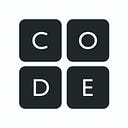Girls and minorities break records in computer science as fastest-growing groups!
Note: As of September 2020, this post contains outdated language or graphics referencing “underrepresented minorities.” To see our current language policy around race, ethnicity, and gender, see this support article.
When Code.org launched in 2013, AP Computer Science was tiny. Fewer than 30,000 students took the course, and almost all of them were white boys. Fewer than 6,000 of the students were female students. Fewer than 4,000 were underrepresented minorities.
In five years, thanks to a collaborative effort with the College Board, hundreds of partners, the support of state and federal government, and most importantly, the daily classroom work of tens of thousands of teachers, computer science is seeing explosive growth in schools.
The fastest growing group: girls and underrepresented minorities
Last year saw the biggest jump thanks to the record-breaking launch of the new Computer Science Principles.
This year the momentum continues.
In 2018, a total of 135,992 students took the AP Computer Science exam, a rise of 31% from last year.
Female students and underrepresented minorities showed the greatest increases from last year:
- Black or African American students — 7,301 participants, up 44%
- Hispanic or Latino — 20,954 participants, up 41%
- Female students — 38,195 participants, up 39%
- Rural students — 14,184 participants, up 42%

Although we are far from balanced representation in computer science, we’ve seen the balance improve steadily, every year since Code.org launched in 2013:
Because 70% of students in Code.org CS Principles classrooms indicate they want to pursue computer science after graduation, we are optimistic that these gains will have a downstream impact on diversity in tech at the university and workforce level.
Although Code.org’s curriculum has become the most popular for AP Computer Science, these results are much larger than any one organization, thanks to a community effort by nonprofits, educators, philanthropic efforts by corporations, and government support.
We still have a long, long way to go
Participation in AP Computer Science is still far from balanced — girls still account for only 28% of all students taking AP Computer Science exams, and underrepresented minorities make up just 21%. This problem continues through to higher education, where 83% of university computer science majors are men, and into the workforce as well.
But the future looks rosier than ever before
When we look at the 30 million students on Code.org, their diversity almost perfectly matches the diversity of the population at large. And the participation is far greater among the youngest students. In the United States, approximately ⅔ of all students in 5th grade have an account on Code.org. From offering curriculum with broader relevance like Computer Science Principles, to teachers who actively recruit a diverse classroom of students, we can’t wait to see what the numbers look like when they grow up!
Teachers are changing the face of computer science
We’re especially thankful for the partnership of the College Board, our network of Regional Partners, and the financial support of amazing donors, especially Microsoft, Facebook, Amazon, Google, and Infosys. We’re also thankful to the many similarly-minded efforts that share in our mission and contribute to this growth.
But most importantly, we’re thankful to the 900,000 teachers who have joined forces in a teacher-led movement with a shared vision: that every student in every school deserves the opportunity to learn computer science. Together, you are changing the face of computer science, and balancing the scales of opportunity for students everywhere. You are our inspiration.
Hadi Partovi, Code.org
